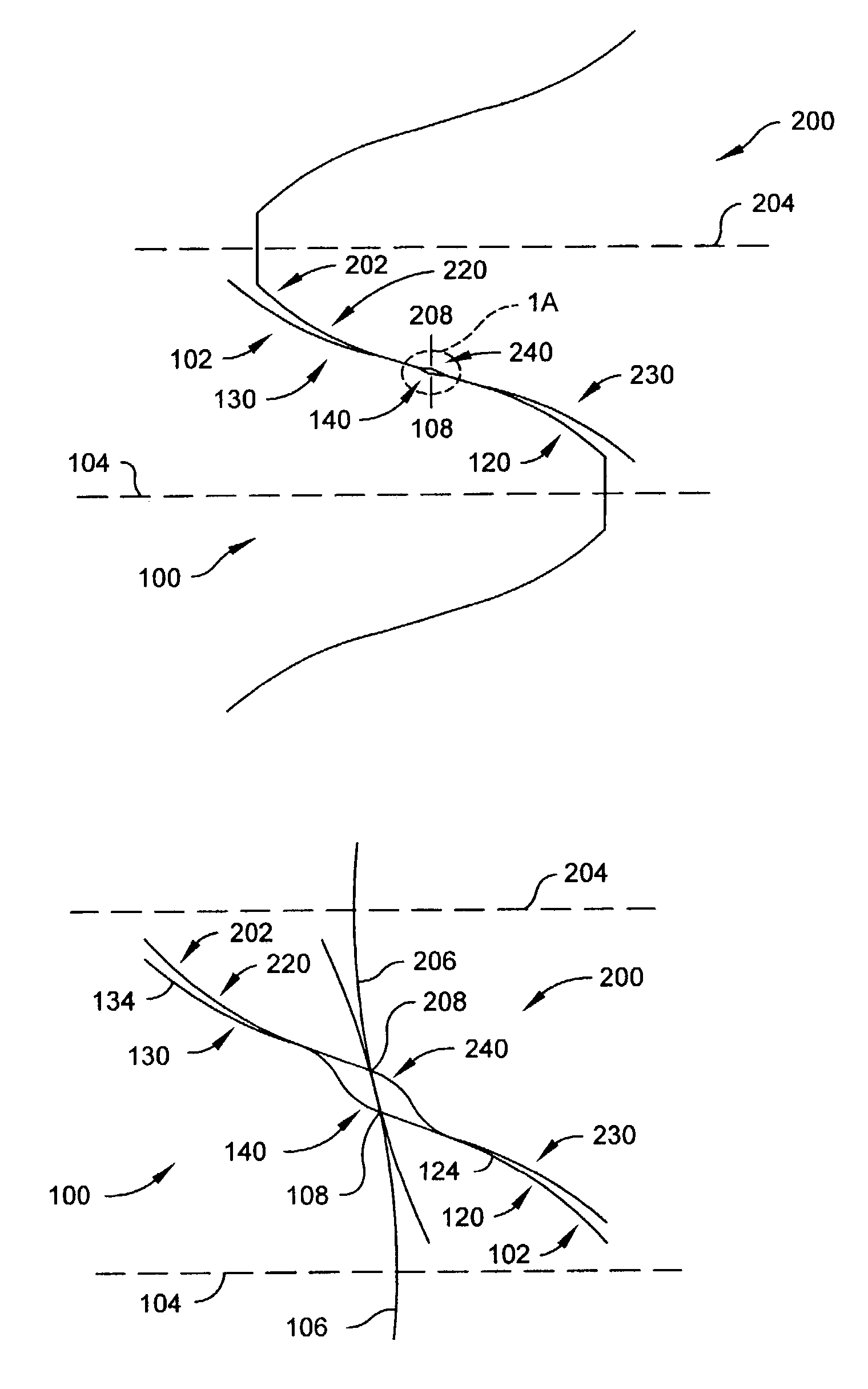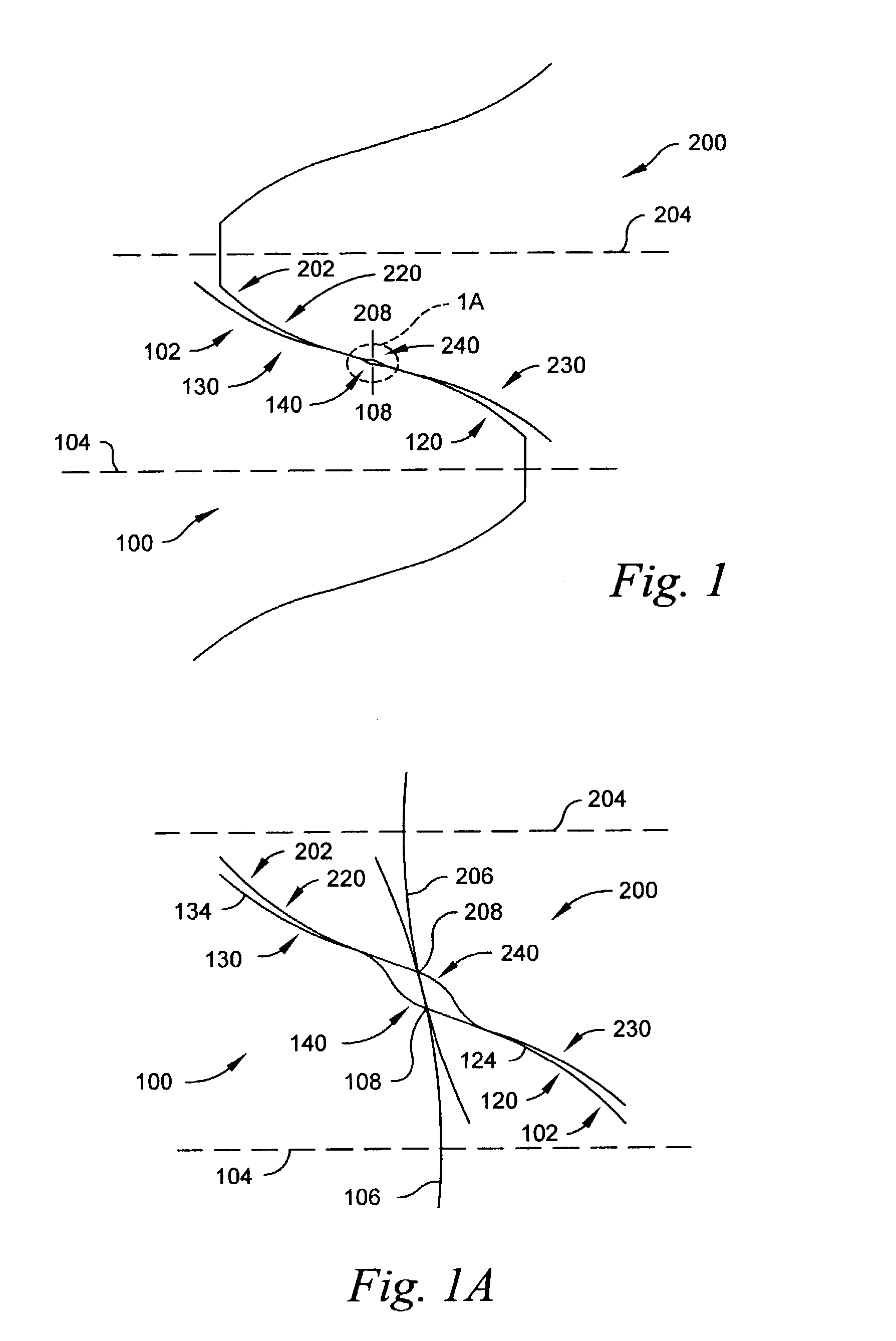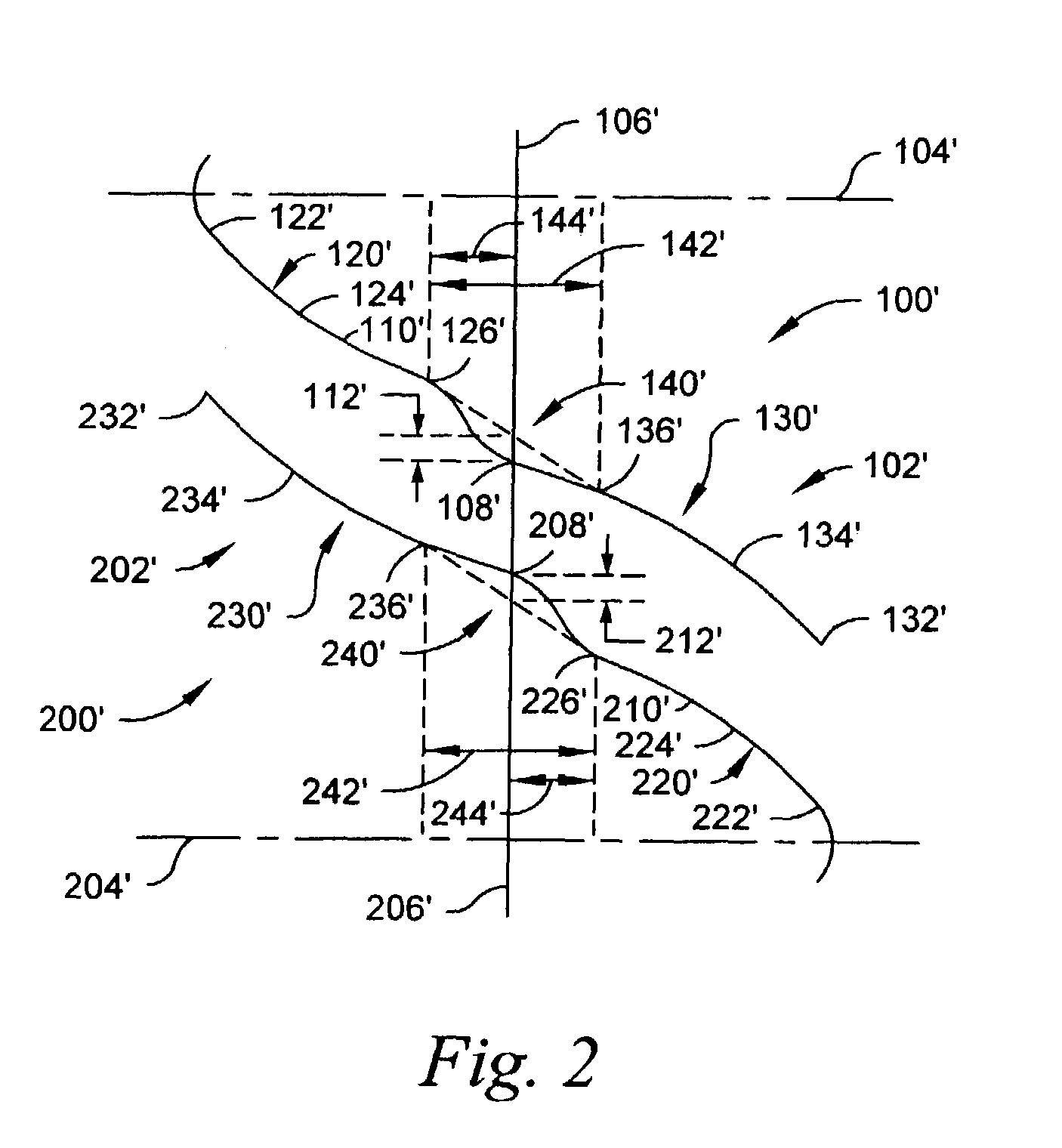Gear tooth profile
a technology of tooth profiles and teeth, which is applied in the direction of gear teeth, gear teeth, gear teeth, etc., can solve the problems of difficult tooth profile design, high pitch point value, and very rapid increase in relative curvatur
- Summary
- Abstract
- Description
- Claims
- Application Information
AI Technical Summary
Benefits of technology
Problems solved by technology
Method used
Image
Examples
Embodiment Construction
[0022]As used in the claims and the corresponding portions of the specification, the word “a” means “at least one.” Further, unless otherwise defined the word “about” when used in conjunction with a numerical value means a range of values corresponding to the numerical value plus or minus ten percent of the numerical value.
[0023]As set forth in the '892 patent, incorporated by reference in its entirety herein, and well known by those skilled in the art, a family of gears can be defined by either a gear tooth profile, a pinion (or mating gear) tooth profile, the shape of the contact path between the gear tooth profile and the pinion tooth profile, a corresponding basic rack tooth profile or basic cutter tooth profile. As used herein, a family of gears comprises all gears that can be cut by the same basic cutter. The term “basic rack” refers to a gear with an infinite number of teeth spaced along a straight line and is the basic member of the family of gears. The basic rack is the com...
PUM
| Property | Measurement | Unit |
|---|---|---|
| Width | aaaaa | aaaaa |
Abstract
Description
Claims
Application Information
 Login to View More
Login to View More - R&D
- Intellectual Property
- Life Sciences
- Materials
- Tech Scout
- Unparalleled Data Quality
- Higher Quality Content
- 60% Fewer Hallucinations
Browse by: Latest US Patents, China's latest patents, Technical Efficacy Thesaurus, Application Domain, Technology Topic, Popular Technical Reports.
© 2025 PatSnap. All rights reserved.Legal|Privacy policy|Modern Slavery Act Transparency Statement|Sitemap|About US| Contact US: help@patsnap.com



